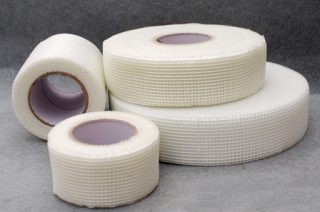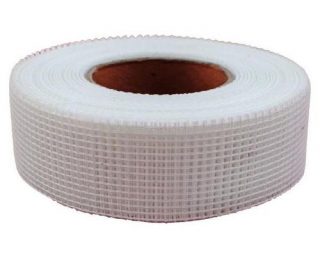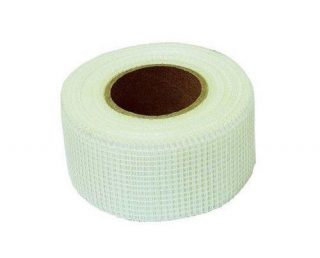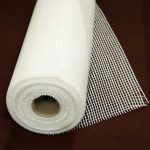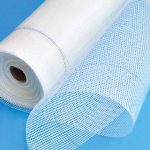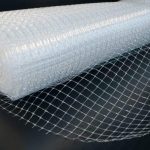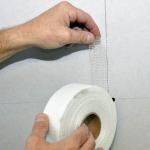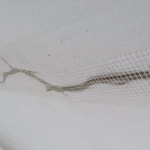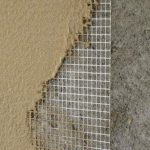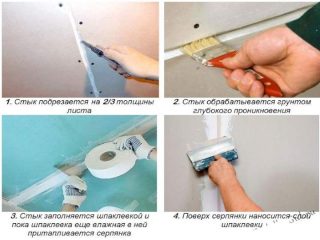In construction work, in addition to basic materials, many additional materials are used. We are talking about a variety of methods of fastening or reinforcement. One of these materials is serpyanka.
Material features
Mesh is being made fiberglass or synthetic fibers... Self-adhesive serpyanka is used only in finishing works, where no material holding required... Its task is to level the surface so that the plaster, paint or varnish does not create indentations at the seam or joint.
Another important use of serpyanka is crack prevention... Often they arise due to subtle movements, for example, the glue drying under the wallpaper or drywall sheet. For the same purpose, the entire surface of the wall is reinforced under the plaster, so that later, even with uneven drying, the plaster layer does not dry out and does not become covered with cracks.
Several types of reinforcing mesh are available. This must be taken into account when choosing an option, having already chosen adhesives and plaster compositions.
Varieties and characteristics
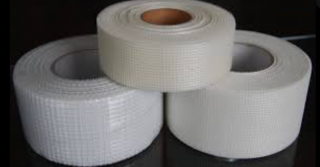
Serpyanka mesh is produced in the form of a rolled tape. The density of the material reaches 50 g / m². The length of the tape in a roll is from 20 to 150 m. The width varies in a wide range - from 42 to 230 mm.
Material is classified according to a variety of criteria. First of all, there is a tape for interior and exterior work.
- For finishing inside they take a mesh with cells of small diameter - from 1 to 3 mm. The thickness of the serpyanka threads is very small, the tape is flexible, lightweight, therefore it is suitable for reinforcing joints between thin materials.
- Serpyanka for outdoor use stronger and made of thicker threads... Cell sizes reach 5 mm and more. Sometimes it is produced without an adhesive layer at all, since it is used under plaster.
By material of manufacture there are 2 options.
- Glass fiber - thin and light. The main purpose is to seal joints between drywall sheets.
- From lavsan - more like a masking bandage due to its softness. The material is taken for gluing joints between walls, window and door profiles. You can use it under the putty: it is thin enough and will not be visible.
Produce also polypropylene serpyanka... Superfine, the density barely reaches 15 g / m². It is used to reinforce the finishing layers of putty.
For gluing sheets, in addition to serpyanka, it is used paper tape - solid or perforated. It performs the same function, but it is not convenient: it does not have an adhesive layer, you have to look for glue.
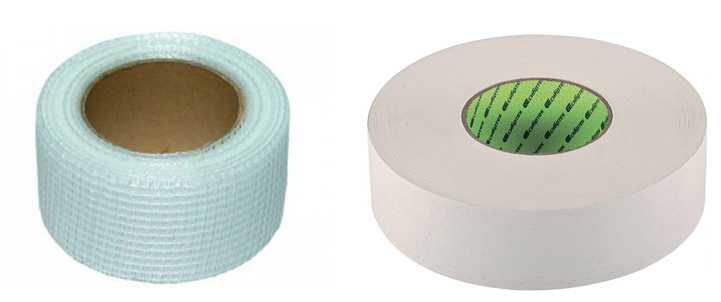
How to choose a serpyanka
The quality of joint processing depends on the characteristics of the serpyanka. It is advisable to test the product and make sure that the appropriate and quality material is selected.
- Thread thickness - the thicker the thread, the stronger the mesh. However, it will be noticeable under a thin layer of putty.
- Cell diameter - it is believed that material with small cells is needed for interior work, since this is the option that is used when processing joints between drywall sheets. This is not true. If work is being carried out to restore panels or reinforce a thick layer of plaster, it is better to take material with larger cells.
- It is advisable to check before buying adhesive layer quality or make sure it is there at all.
- Manufacturer - it is advisable to choose a major manufacturer. In this case, the chances of acquiring an exfoliating weak mesh are much lower.
The price of a serpyanka depends on its characteristics. The option without glue costs 2 times less than a self-adhesive strip.

How to use it correctly in construction
Serpyanka ribbon applies in the following cases:
- reinforcement and alignment of seams and corners;
- smoothing cracks, shallow depressions, irregularities;
- leveling the surface for plaster or putty;
- restoration and repair of coating: plaster panels, chipboard finishes.

Stages of work
- Wall or ceiling surface remove dust and dirt... Concrete is cleaned with a brush, drywall is wiped with a damp sponge.
- Check all fasteners and reinforcement... If necessary, tighten the screws.
- Material primed suitable formulations. Usually these are acrylic, acidic or alkyd compounds.
- Putty surface or area. The layer should be thin.
- Cut off the strip the desired length. Make sure that the threads do not unravel at the ends.
- Lay down the tape along the seam and recessed in a layer of still wet plaster. Sometimes you can do without putty and simply glue the serpyanka to the joint.
- Waiting to dry plaster - usually a day.
The remaining roll is carefully packed in a box and closed so that the adhesive layer does not dry out.
It is allowed to carry out work at a temperature not exceeding 10 ° С. Drafts are excluded. Even drying should take place with the windows closed.

